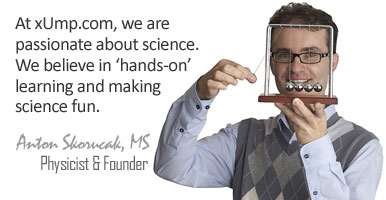-
SHOP BY DEPARTMENT
- Toys & Gifts
- Science Desktop Gadgets and Toys
- Fidgets and Stress Relievers
- Science Meets Art
- Yo-Yos & Gyroscopes
- Remote Control RC Toys
- Glow-in-the-Dark
- Lighting
- Clocks and Watches
- Dinosaur Toys
- Sea Monkeys Kits
- Kaleidoscopes
- Science T-Shirts
- Outdoor Fun
- Balls
- Balloons & Bubbles
- Slime and Putty
- Gags, Pranks & Magic
- Science Mugs
- Pens & Stationery
- Creative Corporate Gifts
- Inflatables
- Edible Science
- Keychains & Bracelets
- Science Party Supplies
- Gift Sets
- Toys & Gifts
- Science Kits
- Mini DIY STEM Kits
- Thames & Kosmos Kits
- Building Kits
- Physics Kits
- Chemistry Sets
- Astronomy & Space Kits
- Plants & Growing Kits
- Animal & Insect Kits
- Human Body Kits
- Geology & Dig Kits
- Math Kits & More
- Forensic Science Kits
- 4M Science Kits
- Crystal Growing Kits
- Alternative Energy Kits
- General Science Kits
- Weather Kits
- Science Kits
- Robotics & Electronics
- Robots & Kits
- Electronics Sets
- Components
- Connectors, Wire & Switches
- Light Bulbs & Holders
- Soldering Tools & Supplies
- Small Hobby DC Motors
- Test & Measurement
- Tools
- Battery Holders
- Batteries, Adapters & Power Supplies
- Lithium Batteries
- USB Power & Accessories
- Boxes & Enclosures
- Arduino & LilyPad
- Robotics & Electronics
- Magnets
- Bar and Block Magnets
- Horseshoe Magnets
- Disk and Ring Magnets
- Mag Marbles and Rocks
- Flexible Magnets
- Iron Filings and Shapes
- Ceramic Magnets
- AlNiCo Magnets
- Neodymium Magnets
- Compasses
- Electro-Magnets
- Letters, Numbers, etc.
- Magnet Kits
- Classroom Magnet Kits
- Fridge Magnets
- Magnet Toys & Puzzles
- Other Magnets
- Magnets
- Optics & Lasers
- Microscopes
- Telescopes
- Solar Cells & More
- Lab Supplies
- Fossils & Rocks
- Globes
- Puzzles & Games
- Books & Study Charts
- Go Green Stuff
- Survival & Safety Products
- Toys & Gifts
- NEW & POPULAR
-
BY AGE & PRICE
- ON SALE
8 Cool Science Experiments for Kids to Inspire STEM Education
by xUmp.com Science StaffPlease share this article:
Put away the boring textbooks and worksheets; it’s time to make science fun again!
Science, technology, and engineering are some of the most important fields in our world today. They drive the cutting edge of human progress and solve some of the most important problems of our time.
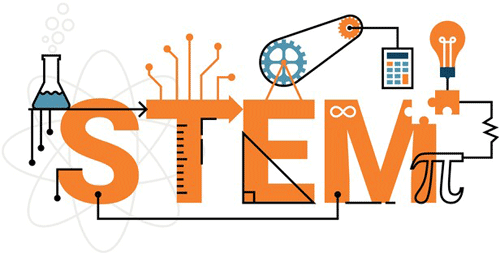
Children who develop a passion and curiosity for STEM (Science, Technology, Engineering, and Math) learning go on to have some of the most exciting, plentiful career opportunities of any group of students. They drive innovation, solve problems, and have the opportunity to do work they truly love.
The only problem? Many kids couldn’t care less about STEM subjects.
It’s not their fault. By their very nature, children need to be stimulated and actively engaged in what they are doing.
But go to 99% of schools and what do you find? Children sitting in nice tidy rows, quietly filling in worksheets and reading from books.
No more!
STEM subjects are some of the most inherently engaging subjects imaginable. You can build, you can create, you can actually blow stuff up in the name of science. It’s time to put the cool back in school!
We are here with eight exciting, engaging, cool science experiments that will invigorate a love and passion for STEM education in your child.
Kids love to make things move.
Whether it’s playing with toy cars, shaking up some Coke and Mentos, or shooting fireworks, movement sparks excitement in children, especially when they’re the ones causing it.
This DIY solar microcar gives them the opportunity to build their very own solar-powered car!
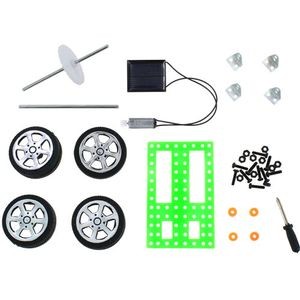
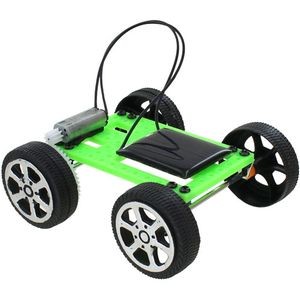
If you’re looking to mix things up or to do another build, there is also an option for a battery-powered fan car as well!
These projects bring together multiple aspects of STEM. Obviously, the build will sharpen their engineering skills. Kids will be curious about solar and wind technology as soon as they open up their kit and see all of the pieces.
Most importantly, this project allows you to have an important conversation about the science of renewable energy and mitigating climate change.
Kids are smarter than many adults give them credit for. Most already know about the climate, and this project gives them hands-on experience with one of the key solutions, renewable energy!
This project gives you a great opportunity not only to discuss the great challenge of our time but to actually show your child that they can be a part of the solution. That’s pretty special.
Learning Outcomes:
Engineering, building, renewable energy, solar energy, wind energy, technology, DIY, environmental science
NGSS Standards:
MS–PS1-6, MS-ETS1, MS-ETS2, MS-ETS-3, 4-PS3
Related Items:
Solar STEM DIY Car Kit
Battery-Powered Fan DIY Micro Car Kit
2. Experimenting with Solar Cell Power Output
This experiment sticks with the theme of renewable energy but takes things to the next level!
Solar energy is one of the key renewable resources that human society may come to rely on in the future. As such, it is important to introduce students and get them thinking about not only how solar energy works but also how to optimize its output.
This 10 pack of 2V solar cells allows for a variety of experiments in the field of solar energy!
One idea would be to buy a digital multimeter and ask your young scientist to find the best place in your yard or on your house to put a solar panel.
The multimeter will measure power output, and your child can then create their own hypothesis for where to best put a solar cell, place the cell in that location, and then measure its power output.
Encourage them to try a few different locations in order to make sure they have found the best possible location. Also, make sure they measure output over time. One location may be great in the evening, but another location could put out more power over the course of an entire day.
Since the pack comes with ten cells, it allows you to set up in a variety of locations simultaneously and measure each of their outputs over time. Then, compare the total output of each location and you will know the best place for a solar cell.
This makes for a fantastic science fair experiment. It allows them to develop a hypothesis, create a strong experiment to test that hypothesis, and measure the results over time.
They can include pictures of attaching the cells to the multimeters, placing the cells at various locations, their outputs over time, and the final result of which one performed best over the course of whichever time frame they choose.
Just be sure to have them ask you for help before climbing on any roofs!
Learning Outcomes:
Environmental engineering, solar energy, solar cell output, designing an experiment, science fair ideas
Related Items:
Solar Cells 2V 10 pack
Hobby Solar Cells
Digital Multimeter
One of the classics in science education experiments, and for a good reason. What kid doesn’t love (with careful adult supervision) a soldering iron!
This kit comes with everything you need to make a simple electronic circuit, save a battery, and the soldering iron.
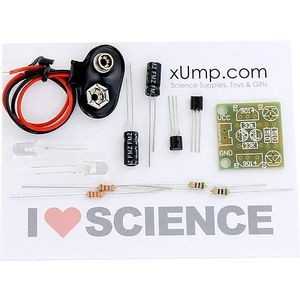
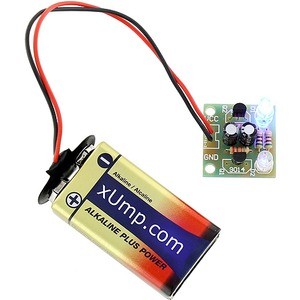
This is a great introduction and opportunity to explore circuitry, electronics, and soldering. It is also an easy little introduction experiment that can springboard into some really exciting concepts and open the door to cool opportunities in robotics, electronics, and technology manufacturing!
Plus, even though it is a simple light, there is something satisfying about hooking up a circuit and finally watching that LED bulb start flashing. You can even add this finished circuit to their favorite toy or train set.
Every great technologic innovator started with a simple circuit!
Learning Outcomes:
Electronics, circuitry, engineering, building, technology, soldering
Related Items:
DIY Flashing LED Circuit Solder Kit
Soldering Iron Kit
4. Exploring Electromagnetism with a Miniature Tesla Coil and Plasma Ball
Electricity is one of the most fascinating things in all of science.
From the awesome force of lightning to the ability to power everything around us, electricity is a great starting point when it comes to generating a passion and excitement about science.
Another crucial step in the life of any future scientist is to have heroes to look up to, scientists who inspire and fascinate young children.
Nikola Tesla is one of those heroes.
Tesla was a mechanical and electric engineer, inventor, and futurist best known for designing the modern AC current power supply system. However, his exploits and ideas are one of the most compelling stories in all of science, and he serves as a hero to many of the great inventors of our day.
This miniature Tesla coil brings together both of these things, the awesomeness of electricity and an opportunity to talk about one of the great scientific minds in one great experiment.
Your child will be fascinated when they power up this 5 volt USB Tesla coil or a similarly-sized Tesla coil powered with a standard DC adapter, then move the neon bulb closer and watch it light up through the power of wireless electricity!
The Tesla coil works through the process of electromagnetic induction, where a changing magnetic field creates electric potential and compels the current to flow.
Another demonstration of this electromagnetism, with a great visual component, would be the classic plasma ball. The electric field excites the near-vacuum within. When a finger is put up to the ball, the plasma within the ball will then be attracted to your finger because you are connected to the ground - so really, plasma is attracted to the ground, just like lightning. You can also put a neon bulb close to the surface of the ball, and it will light up.
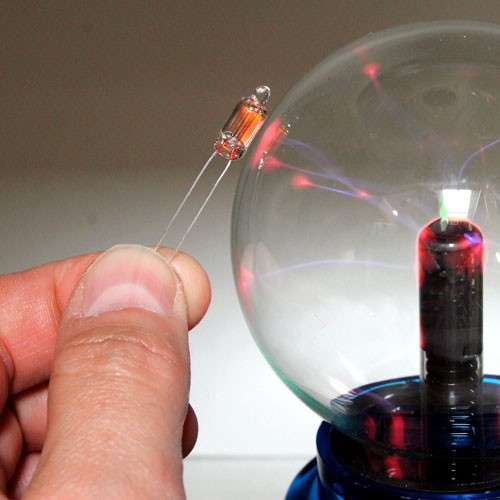
Since it’s not advised to have a full-powered Tesla coil operating in the garage, you can use this miniature coil as an opportunity to pull up some cool videos of 40-foot Tesla coils shooting lightning into the sky!
Learning Outcomes:
Electricity, electromagnetism, electric currents, important scientists
Related Items:
9V Micro Tesla Coil Module - Fully Assembled
USB-Powered Mini Plasma Ball
6 inch Plasma Ball
Neon Bulb
5. Visualizing Magnetic Fields with a Magnetic Field Cube
When it comes to the “magic” of science, you can’t beat magnetism.
What kid isn’t fascinated by magnets? Invisible forces pulling things together or pushing them apart.
Playing with magnets allows you to actually feel this invisible force acting on the real world.
Well, now you can see it too!
This clear cube contains iron filings suspended in a solution, with a cylindrical hole drilled out in the middle. When the included magnet is dropped down into the hole, magnetic fields suddenly come alive as the iron filings adhere to the patterns of the magnetic field!
These patterns are easily observable from all around the cube, making this a good experiment for small groups.
Once students have observed the magnetic fields, try giving them an additional magnet. The fields can be manipulated by introduced magnetism from the outside, so your child will be able to manipulate the magnetic patterns and actually see what is going on!
The experience of not only seeing magnetic fields but also being able to manipulate and play with them will be sure to delight and inspire your future scientist.
Remember that, at its core, science is often indistinguishable from play.
Giving your student this cube and a magnet, then letting them simply engage with their curiosity, will do more for their love of science than any worksheet could hope to do.
Learning Outcomes:
Magnetism, magnetic fields, ferromagnetism
Related Items:
Magnetic Field Cube
Magnetic Lines of Force Viewer
N50 Neodymium Bar Magnet
6. Get Excited About Reactions by Growing Your Own Glow-In-The-Dark Crystals!
For a discipline that can cause explosions, it is a crime how boring most education systems make chemistry.
Chemistry and chemical reactions are some of the most exciting phenomena in all of science and can help awe and inspire generations of future chemists.
One fun way to explore this is by combining elements to get reactions.
Crystal growing kits use a potassium aluminum salt solution which crystallizes over time.
While many kits offer one solution with limited possibilities (just wait and watch), some of the kits in the above collection allow your future scientist to experiment with dozens of different variables and create a multitude of crystallization processes!
Try adding some strontium aluminate to your crystal solutions, creating phosphorescent crystals which will charge up in the light and then emit the stored light energy in the dark.
Or test out the ultraviolet-reactive pigments, pink or greenish-yellow, to create fluorescent crystals. Then, use an ultraviolet flashlight to put on a dazzling light show.
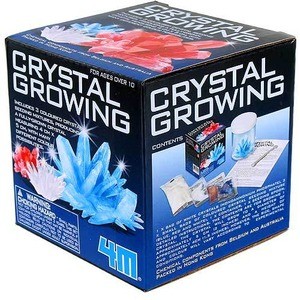
Crystal-growing kits offer a fun, engaging way to experiment with a variety of scientific concepts.
Measure crystallization out of a solution, and the dissolution of crystals back into the solution, impact the temperature of the solution.
Explore chemistry, solutions, crystallization, and geometries, all while creating dazzling structures your child can keep in their room and show off to friends!
This can also be a conversation starter about elements and the periodic table. Explain how different elements react in different ways and provide the basis for all of the cool chemical reactions they’ve been experimenting with.
The elements and periodic table are often done a disservice by rote memorization and uninspired lesson plans. This is a chance to make chemistry fun again.
If your young learner needs help remembering the elements, give them this awesome periodic table banner pen to commemorate the experiment and allow them to keep the periodic table with them whenever they are writing!
Learning Outcomes:
Chemistry, chemical reactions, crystallization, solutions, elements, the periodic table
Related Items:
4M Crystal Growing Kit
Glow Crystal Growing 4M Kit
Crystal Geode Growing 4M Kit
KidzLabs 4M Crystal Science Kit
7. Explore the Microscopic World with Digital Microscopes
The microscopic world is another fascinating concept sure to inspire future scientists.
The idea that our world, our very bodies, are made up of smaller, fundamental building blocks can be absolutely mind-bending for young learners.
Digital microscopes allow us to actually see this smaller world!
Start by telling your future scientist about the building blocks of our world, the atoms, and molecules that make everything up. Teach them about microbes and bacteria, that all life started out in these basic forms.
Then, use a digital microscope to tap into this world and visually explore these concepts.
This High Definition Wifi Digital Microscope allows you to view images up to 1000X directly on your phone or tablet, without any wires!

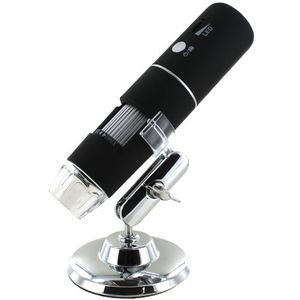
This is ideal for going out and exploring, maybe testing some soil or water from the local pond to see what is living within.
After teaching a bit about this microscopic world, allow your child’s curiosity to guide the experiments. Ask them what they would like to inspect and what they think they might see before putting it under the microscope.
Allowing them to take the lead encourages their curiosity, as well as giving them practice in making and testing hypotheses.
Putting your child and their curiosity in the drivers’ seat will build a strong foundation in the scientific method, which will serve them well throughout their life.
So give them a microscope and let them go nuts!
For an enhanced experience, check out the HD 1080p Digital Microscope with an LCD Screen. This has a screen attached directly to the microscope, so you can view amazing images in high definition without the need to strain your eyes. It also allows your child to save photos and videos of their explorations - great for science fair projects.
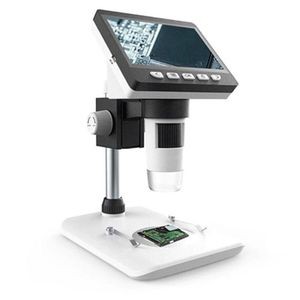
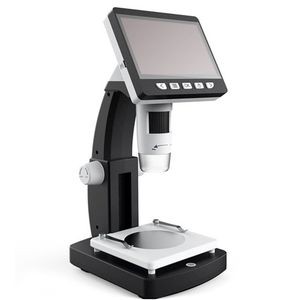
Learning Outcomes:
Microscopy, cells, biology slides, microbiology
Related Items:
60X Clip-on LED Microscope
1000X HD WiFi Wireless Digital Microscope
1000X HD 1080P Digital Microscope with LCD Screen
Deluxe LCD Digital Microscope - 1000X HD 1080P 4.3TFT 2MP
8. Build a Robot and Inspire Future Inventors
In the age of technology, robotics is one of the coolest and most compelling fields in all of science.
From performing surgery to doing backflips, robotics these days are truly awe-inspiring.
Yet every great inventor, every genius who helped construct life-saving robotic surgeons, all started with simple builds.
KidzRobotix has some great starter kits which allow future inventors to get hands-on experience building fun, simple robots.
Try creating a robot out of a recycled soda can, teaching your child about robotics and upcycling in one fell swoop.
Or create a Doodlebot! This robot’s motor causes it to shake and spin, creating spectacular designs on paper. You can even adjust the height of the baseplate, as well as the angles of the pens, which will create different types of patterns.
Young learners can watch a video of robotic arms performing surgery and then build one of their very own. Just maybe don’t attempt surgery with it quite yet.
Whichever kit you choose, your future inventor is sure to be delighted and inspired when they build a robot of their very own!
Learning Outcomes:
Robotics, engineering, mechanical engineering, technology, building
Related Items:
Tin Can Robot 4M Kit
Doodling Robot 4M Kit









